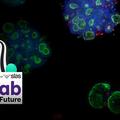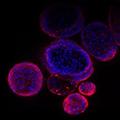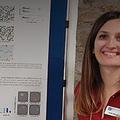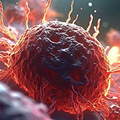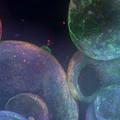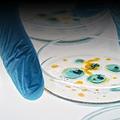2021/9/18
オルガノイド研究の歴史:スポンジ細胞から機能的臓器へ
まず、オルガノイドの簡単な定義から始めよう。オルガノイドとは、複数の種類の細胞を含み、少なくともマイクロスケールでは、リアルな組織学的に配列された三次元集合体を指す。オルガノイドは、ヒトまたは動物の細胞から形成され、分化細胞、幹細胞、あるいはその両方の混合細胞である。
オルガノイドの利用が増加しているのは、幹細胞由来の細胞が急速に発展していることと、動物モデルの使用を減らしたいという願望があるからである。オルガノイドはすでに、病気の発生方法や新形成(癌)を理解するために使用されており、重要な医療や産業への応用(毒物学など)、そして最終的には移植にも使用されている。サイエンティスト』誌の著者、ケリー・グレンスは、オルガノイドを「今年の進歩」のひとつに選んだ1。オルガノイドはすでに、人体のさまざまな部位を表現するために開発されており、今後数年でその用途が拡大すると予想されている。
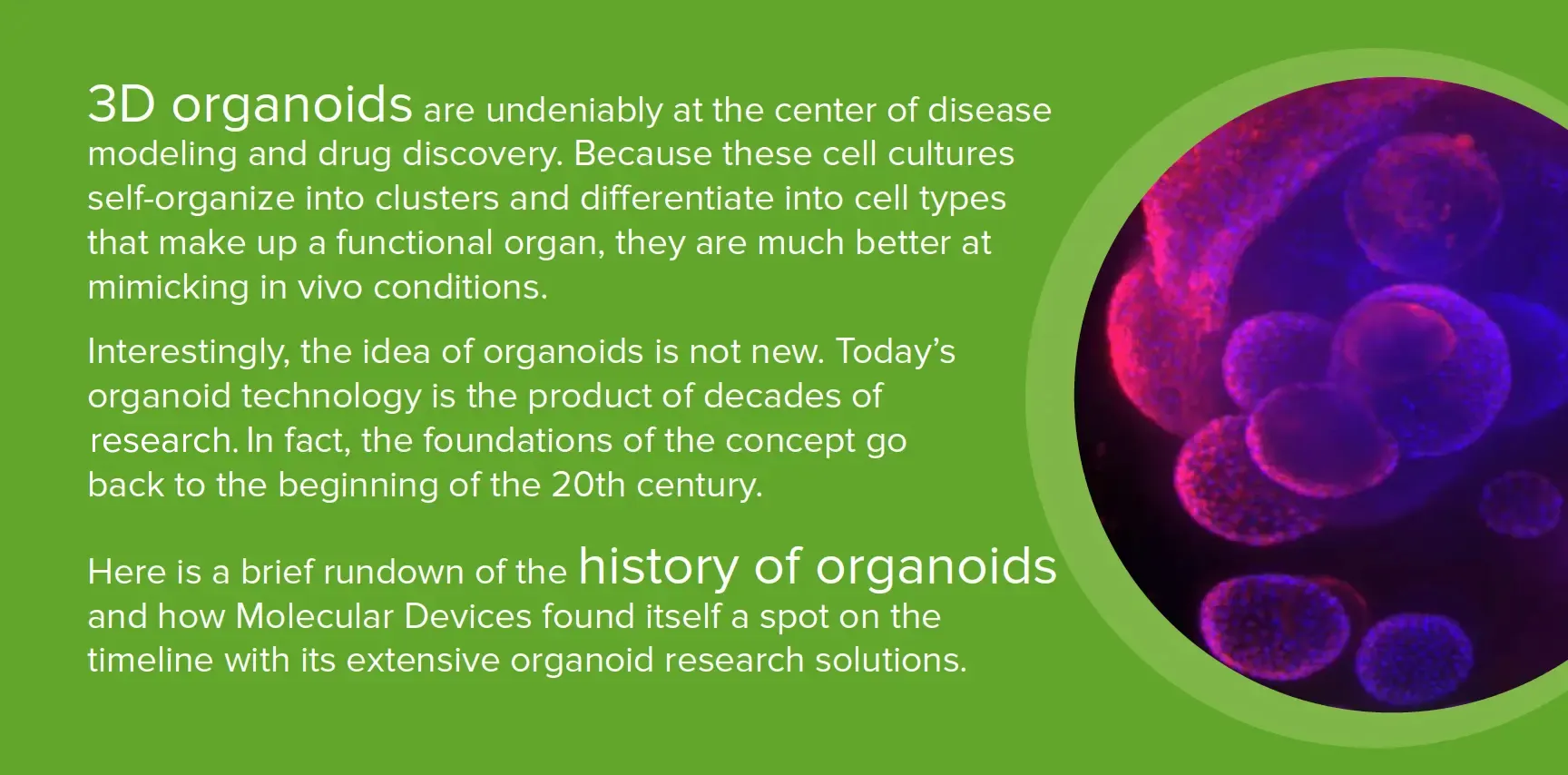
オルガノイド研究の歴史
3Dオルガノイドは、紛れもなく疾患モデリングと創薬の中心にある。これらの細胞培養物は、クラスターに自己組織化し、機能的な器官を構成する細胞タイプに分化するため、生体内の状態を模倣するのに非常に適している。
興味深いことに、オルガノイドのアイデアは新しいものではない。今日のオルガノイド技術は、数十年にわたる研究の成果である。実際、この概念の基礎は20世紀初頭にまでさかのぼる。
ここでは、オルガノイドの歴史と、モレキュラー・デバイスがその広範なオルガノイド研究ソリューションによって、どのようにタイムラインの一角を占めるようになったかを簡単に紹介する。
幹細胞以前:自己組織化と再凝集
細胞の自己組織化は、1907年にヘンリー・ヴァン・ピーターズ・ウィルソンによって初めて観察された。この実験により、細胞は外部からの合図や特定の解剖学的配置を必要とすることなく、多細胞構造を作るための情報を持っていることが実証された。
その後数十年の間に、他の研究グループも、1944年には両生類の原始腎臓、1960年にはニワトリの胚細胞など、費用対効果が高く、よく研究されている生物で、同様の解離-再凝集パターンを観察した。
1964年、マルコム・スタインバーグ(Malcolm Steinberg)が、細胞は「表面接着の差による熱力学」に従って自己組織化するという仮説を立てた時、細胞再生に関する最初の科学的理論が登場した5。彼は、同じ「接着システム」を発現する細胞同士は、異なる接着システムを発現する細胞よりも強く接着すると提唱した。従って、細胞の混合物は、その「接着」タイプに基づいて再集合することになる。しかしその後の証拠から、細胞の再凝集には単純な熱力学以上のものが必要であり、さらなる細胞メカニズムが必要であることが示された。
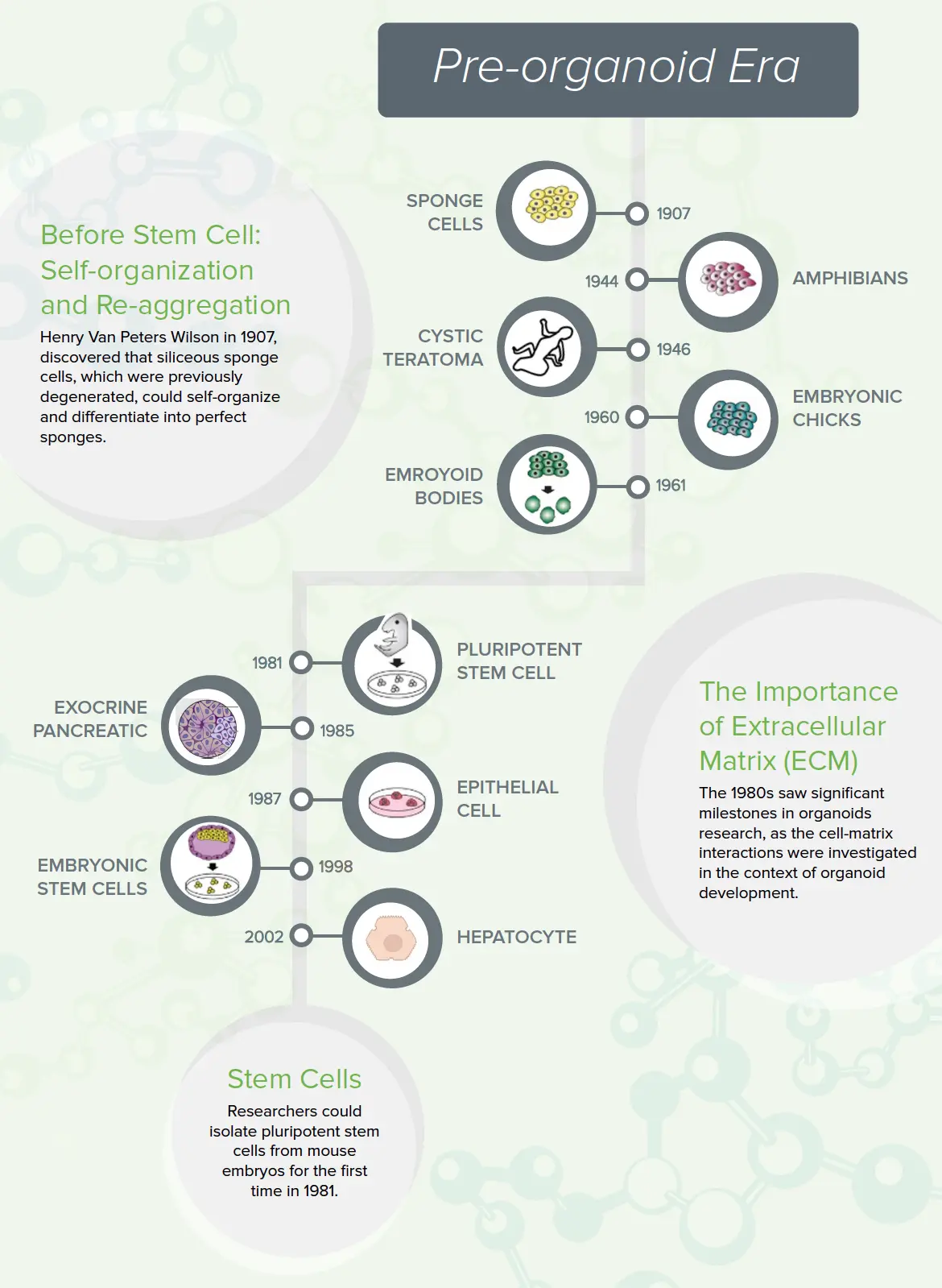
細胞外マトリックス(ECM)の重要性
1980年代には、細胞-マトリックス相互作用がオルガノイド発生の文脈で研究され、オルガノイド研究における重要なマイルストーンが見られた。
細胞培養がプラスチックディッシュで汚染されるのを防ぐため、研究者たちは天然のECMを模倣したハイドロゲルである足場を使い始めた。さらに重要なことは、ECMが接着や分化のシグナル伝達に必要なタンパク質を細胞に供給することである。
1987年、ECMの重要性がLiらによって強調された。Liらはマウス肉腫細胞から得たEHS(Engelbreth-Holm-Swarm)マトリゲルを使用し、ヒトECMに一般的に見られる接着タンパク質を含んでいた。EHS培地を用いると、乳房上皮を完全に形成された3D管と管腔に成長させることができ、乳タンパク質の分泌を示した6。
Shannonらは、同じECM戦略を用いて、肺胞II型上皮細胞の機能分化を実証した7。
幹細胞研究
幹細胞が開発される以前は、ヒトオルガノイドの形成は、ヒトから分離された組織片の使用に依存していた。幹細胞の研究は、80年代には同時に盛んになっていた。例えば1981年、研究者たちは初めてマウス胚から多能性幹細胞を分離することができた。
最初のヒト胚性幹細胞株(Thomson et al 1998)と、その後のヒト誘導多能性幹細胞(hiPSC)株の開発は、オルガノイド研究への関心を高めるのに役立った。さらに重要なことは、hiPSCは特定の成長因子で調整された培地中で様々な細胞型に分化させることができるということである8。オルガノイドを作るには、タイミングや時間的要因も重要であった。これらの観察は、幹細胞をオルガノイド研究の最前線に押し上げるには十分すぎるものであった。
人工多能性幹細胞 (iPSC)
人工多能性幹細胞(iPS細胞またはiPSCとも呼ばれる)は、成体組織(通常は皮膚や血液細胞由来)から採取された細胞を、遺伝子改変によって胚のような多能性の状態に戻したものである。2006年、京都大学の山中伸弥教授のチームがマウスの皮膚細胞から初めて開発したiPS細胞9は、再生医療の分野で有望視されている。
多能性幹細胞は増殖や自己複製を無限に行うことができ、神経細胞や心臓、膵臓、肝臓の細胞など、体内のあらゆる成体細胞に分化することができる。また、iPS細胞は成体組織から直接得ることができるため、患者に適合した形で作成することができる。つまり、変異遺伝子を持つ重要な疾患関連細胞モデルを作成し、薬剤の有効性をスクリーニングしたり、患者由来の細胞で個々の患者の薬剤感受性をテストしたりすることができる。潜在的には、各個人が自分自身の多能性幹細胞株を持つことで、損傷した心臓や肝臓組織の代わりとなる細胞の単一供給源を提供することができる。白血病患者のためにがん細胞のない新しい血液を作ったり、神経障害の治療のために神経細胞を作ったりすることができる、血液細胞から生成されたiPSCを想像してみてほしい。
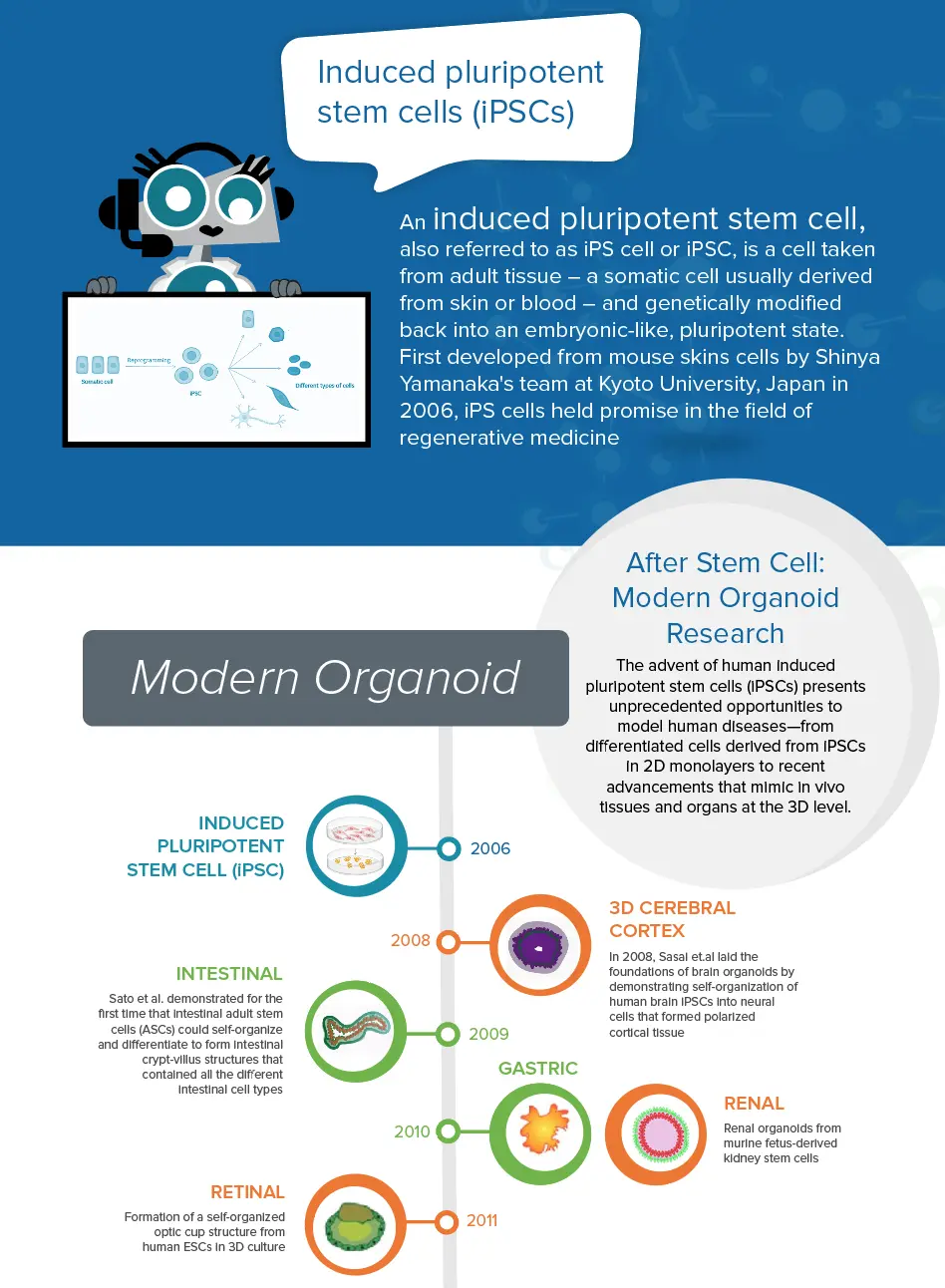
- 2010 - マウス胎児由来腎臓幹細胞からの腎臓オルガノイド 13
- 2012 - ヒトESC細胞から3次元培養で自己組織化した視神経杯構造を形成
- 2013 - さまざまな脳組織を含む3D大脳オルガノイドを誘導した最初の研究 14
- 2014 - 内皮細胞と気管支肺胞幹細胞の3次元共培養による肺オルガノイド 15
- 2013 - Lgr5+肝幹細胞が肝臓オルガノイドとして増殖し、マウスに移植すると機能的な肝細胞に分化した 16
- 2013 - 成人膵臓腫瘍からの癌疾患モデルを用いた膵臓オルガノイドの形成 17
幹細胞のその後:現代のオルガノイド研究
幹細胞の分離はオルガノイド研究を加速させ、多くの扉を開いた。幹細胞由来のオルガノイドは、患者の生検よりもはるかに効果的に免疫反応をモニターできた。
2008年、笹井らは、ヒト脳iPSCが神経細胞へと自己組織化し、極性皮質組織を形成することを実証し、脳オルガノイドの基礎を築いた10。
2009年もまた、現代のオルガノイド研究にとって重要な年であった。佐藤らは、腸管成体幹細胞(ASCs)が自己組織化・分化して、さまざまなタイプの腸管細胞をすべて含む腸陰窩-絨毛構造を形成することを初めて実証した11。
その3年後、同じ研究室は、損傷したマウスの大腸に腸オルガノイドを移植できることを証明し、幹細胞治療の種をまいた。移植されたオルガノイドはマウスの大腸に完全に統合され、6ヵ月後でも成功が持続した12。
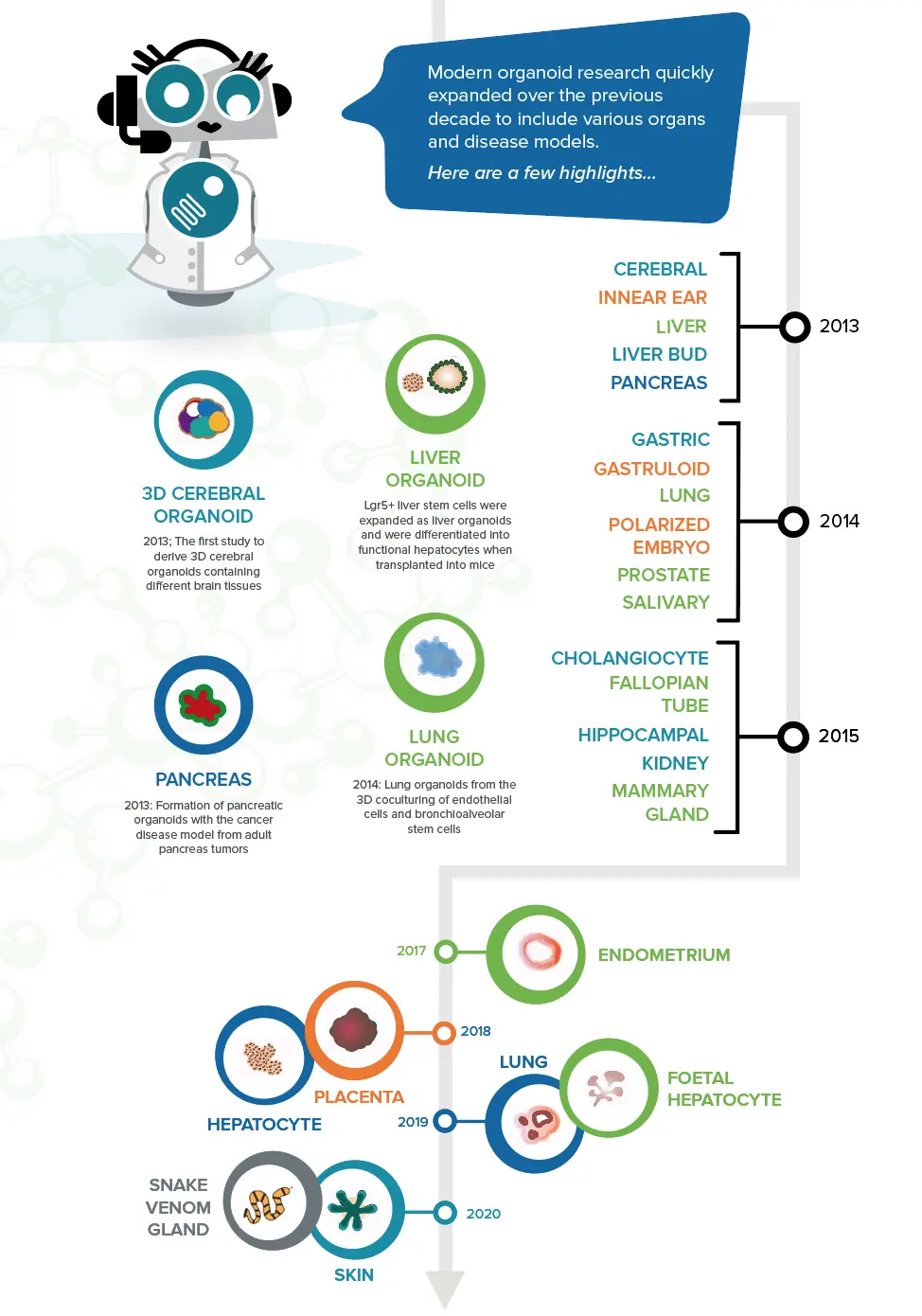
現代のオルガノイド研究は、過去10年間で急速に拡大し、さまざまな臓器や疾患モデルが含まれるようになった。以下はそのハイライトである:
オルガノイド画像ギャラリー
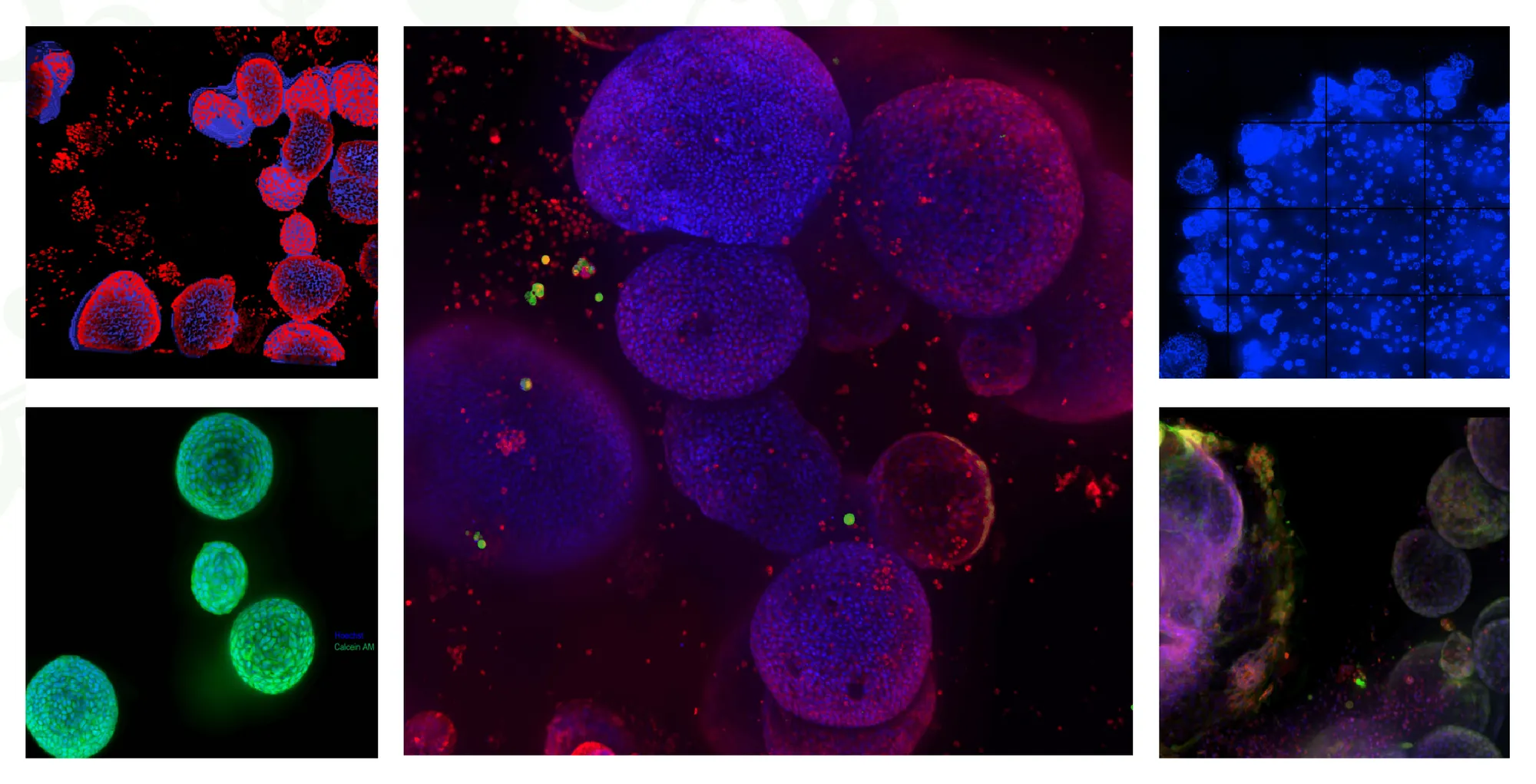
他の画像はオルガノイドのアプリケーションページでご覧ください。
モレキュラー・デバイスのオルガノイド研究
最近10年間で、オルガノイド開発の進歩は急上昇し、これまで以上に複雑で生命に近いオルガノイドが生み出されている。必然的に、イメージングと分析技術も、絶え間ない進歩に追いつく必要がある。サンプルの種類が2Dから3D細胞モデルに移行するにつれ、従来の方法では高品質な結果と迅速な取得ができなくなります。
モレキュラー・デバイスは、ハイスループット・プラットフォームに自動化された特性解析、ハイコンテント・イメージング、高度な解析技術を導入することで、オルガノイド研究をより実現可能なものにしようと努力しています。このプラットフォームにより、肺から大脳まで様々なタイプのオルガノイドにおいて、幹細胞の生成、オルガノイドの特性評価、薬剤スクリーニング、毒性評価など、様々な操作のワークフローを自動化することが可能になりました。
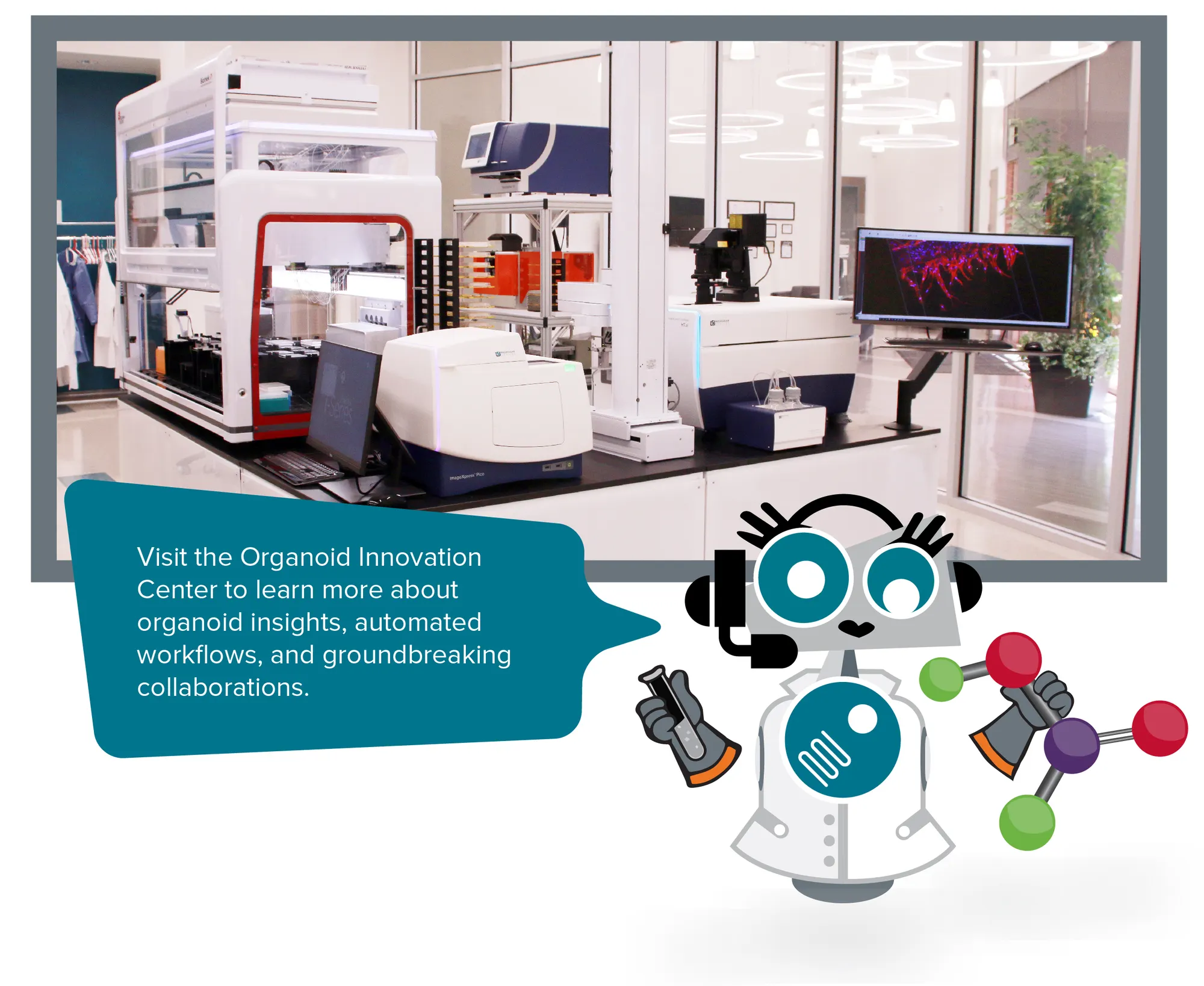
オルガノイド研究ノート、ウェビナー、ポスターなどにアクセスするには、オルガノイド・アプリケーション・ページをご覧ください。
一番の利点は、これらのソリューションの専門家である必要はないということです。モレキュラー・デバイスの新しいオルガノイド・イノベーション・センターは、オルガノイド培養とスクリーニングの自動化ワークフローを、社内の科学者の指導のもとでテストできる共同作業拠点です。
オルガノイド・イノベーション・センターでは、オルガノイドに関する洞察、自動化されたワークフロー、画期的な共同研究についての詳細をご覧いただけます。
参考文献
- Grens, K. "2013's big advances in science. The Scientist, New York City (2013): 110.Grens, K. "2013's big advances in science. The Scientist, New York City (2013): 110.
- Wilson, H. V. "A new method by which sponges may be artificially reared." Science 25.649 (1907): 912-915.Wilson, H. V. "A new method by which sponges may be artificially reared." Science 25.649 (1907): 912-915.
- Holtfreter, Johannes. "Experimental studies on the development of the pronephros." Rev. can. biol. 3 (1943): 220-250.Holtfreter, Johannes. "Experimental studies on the development of the pronephros." Rev. can. biol. 3 (1943): 220-250.
- Weiss, Paul, and A. C. Taylor. "Reconstitution of complete organs from single-cell suspensions of chick embryos in advanced stages of differentiation." Proceedings of the National Academy of Sciences of the United States of America 46.9 (1960): 1177.Weiss, Paul, and A. C. Taylor. "Reconstitution of complete organs from single-cell suspensions of chick embryos in advanced stages of differentiation." Proceedings of the National Academy of Sciences of the United States of America 46.9 (1960): 1177.
- Steinberg, Malcolm S. "The problem of adhesive selectivity in cellular interactions." Cellular membranes in development. Vol. 22. Academic Press New York, 1964. 321-366.Steinberg, Malcolm S. "The problem of adhesive selectivity in cellular interactions." Cellular membranes in development. Vol. 22. Academic Press New York, 1964. 321-366.
- Li, Ming Liang, et al. "Influence of a reconstituted basement membrane and its components on casein gene expression and secretion in mouse mammary epithelial cells." Proceedings of the National Academy of Sciences 84.1 (1987): 136-140.Li, Ming Liang, et al. "Influence of a reconstituted basement membrane and its components on casein gene expression and secretion in mouse mammary epithelial cells." Proceedings of the National Academy of Sciences 84.1 (1987): 136-140.
- Shannon, John M., Robert J. Mason, and Susan D. Jennings. "Functional differentiation of alveolar type II epithelial cells in vitro: effects of cell shape, cell-matrix interactions and cell-cell interactions." Biochimica et Biophysica Acta (BBA)-Molecular Cell Research 931.2 (1987): 143-156.Shannon, John M., Robert J. Mason, and Susan D. Jennings. "Functional differentiation of alveolar type II epithelial cells in vitro: effects of cell shape, cell-matrix interactions and cell-cell interactions." Biochimica et Biophysica Acta (BBA)-Molecular Cell Research 931.2 (1987): 143-156.
- Martin, Gail R. "Isolation of a pluripotent cell line from early mouse embryos cultured in medium conditioned by teratocarcinoma stem cells." Proceedings of the National Academy of Sciences 78.12 (1981): 7634-7638.Martin, Gail R. "Isolation of a pluripotent cell line from early mouse embryos cultured in medium conditioned by teratocarcinoma stem cells." Proceedings of the National Academy of Sciences 78.12 (1981): 7634-7638.
- Takahashi K, Yamanaka S (August 2006). "Induction of pluripotent stem cells from mouse embryonic and adult fibroblast cultures by defined factors". Cell. 126 (4): 663–76.Takahashi K, Yamanaka S (August 2006). "Induction of pluripotent stem cells from mouse embryonic and adult fibroblast cultures by defined factors". Cell. 126 (4): 663–76.
- Eiraku, Mototsugu, et al. "Self-organized formation of polarized cortical tissues from ESCs and its active manipulation by extrinsic signals." Cell stem cell 3.5 (2008): 519-532.Eiraku, Mototsugu, et al. "Self-organized formation of polarized cortical tissues from ESCs and its active manipulation by extrinsic signals." Cell stem cell 3.5 (2008): 519-532.
- Sato, Toshiro, et al. "Single Lgr5 stem cells build crypt-villus structures in vitro without a mesenchymal niche." Nature 459.7244 (2009): 262-265.Sato, Toshiro, et al. "Single Lgr5 stem cells build crypt-villus structures in vitro without a mesenchymal niche." Nature 459.7244 (2009): 262-265.
- Yui, Shiro, et al. "Functional engraftment of colon epithelium expanded in vitro from a single adult Lgr5+ stem cell." Nature medicine 18.4 (2012): 618-623.Yui, Shiro, et al. "Functional engraftment of colon epithelium expanded in vitro from a single adult Lgr5+ stem cell." Nature medicine 18.4 (2012): 618-623.
- Unbekandt, Mathieu, and Jamie A. Davies. "Dissociation of embryonic kidneys followed by reaggregation allows the formation of renal tissues." Kidney international 77.5 (2010): 407-416.Unbekandt, Mathieu, and Jamie A. Davies. "Dissociation of embryonic kidneys followed by reaggregation allows the formation of renal tissues." Kidney international 77.5 (2010): 407-416.
- Lancaster, Madeline A., et al. "Cerebral organoids model human brain development and microcephaly." Nature 501.7467 (2013): 373-379.Lancaster, Madeline A., et al. "Cerebral organoids model human brain development and microcephaly." Nature 501.7467 (2013): 373-379.
- Lee, Joo-Hyeon, et al. "Lung stem cell differentiation in mice directed by endothelial cells via a BMP4-NFATc1-thrombospondin-1 axis." Cell 156.3 (2014): 440-455.Lee, Joo-Hyeon, et al. "Lung stem cell differentiation in mice directed by endothelial cells via a BMP4-NFATc1-thrombospondin-1 axis." Cell 156.3 (2014): 440-455.
- Huch, Meritxell, et al. "In vitro expansion of single Lgr5+ liver stem cells induced by Wnt-driven regeneration." Nature 494.7436 (2013): 247-250.Huch, Meritxell, et al. "In vitro expansion of single Lgr5+ liver stem cells induced by Wnt-driven regeneration." Nature 494.7436 (2013): 247-250.
- Greggio, Chiara, et al. "Artificial three-dimensional niches deconstruct pancreas development in vitro." Development 140.21 (2013): 4452-4462.Greggio, Chiara, et al. "Artificial three-dimensional niches deconstruct pancreas development in vitro." Development 140.21 (2013): 4452-4462.
